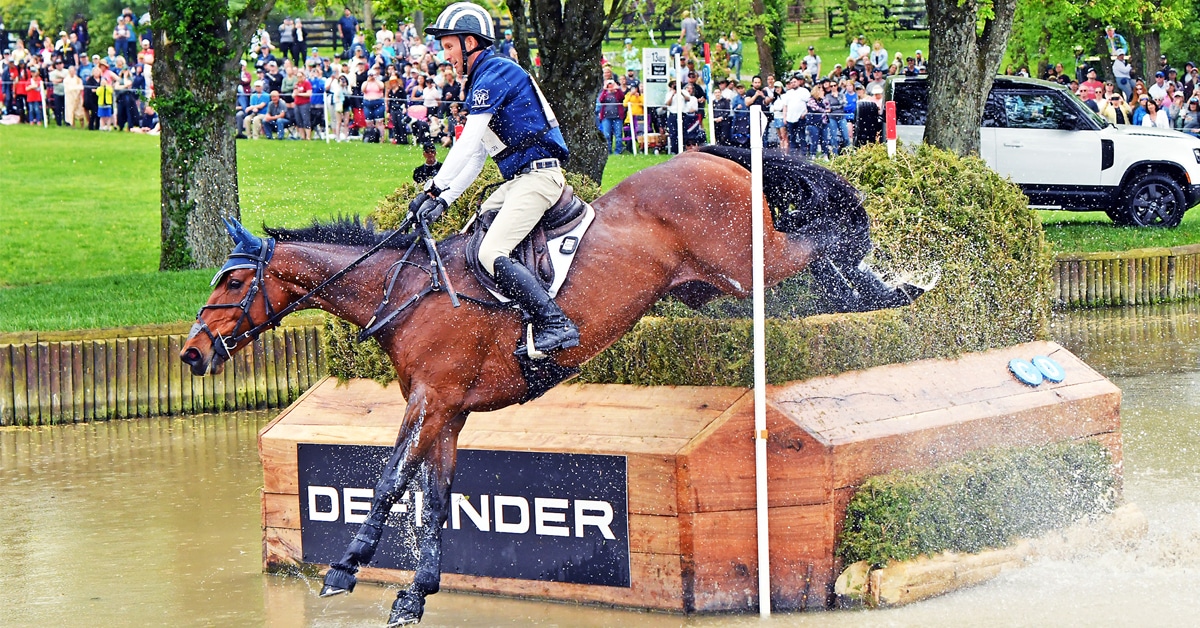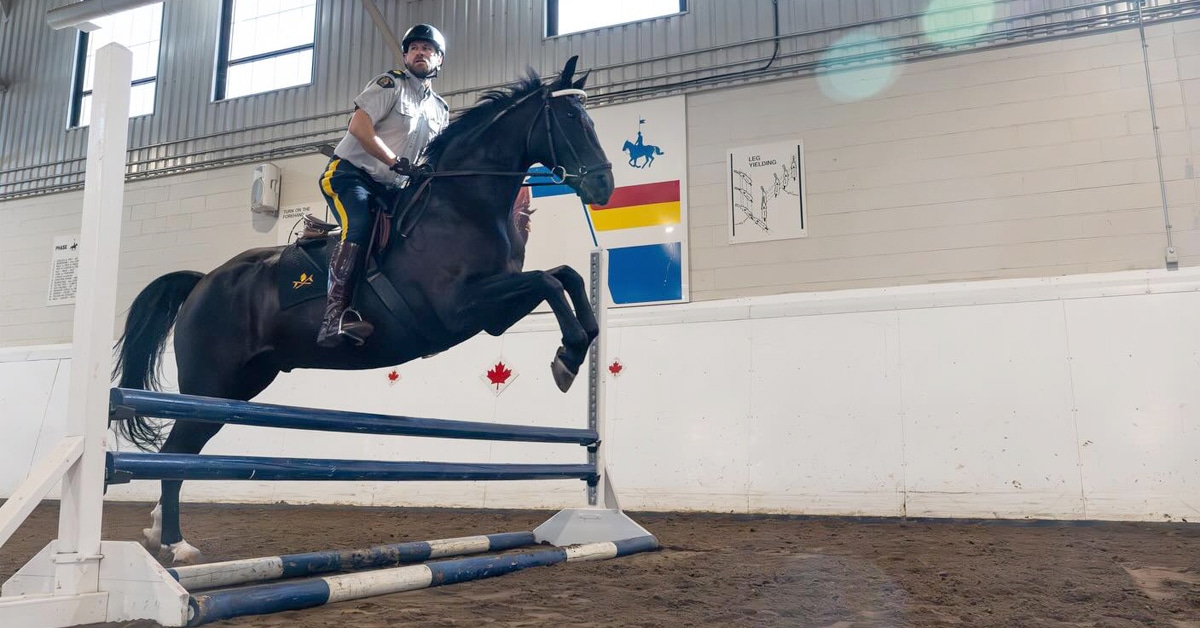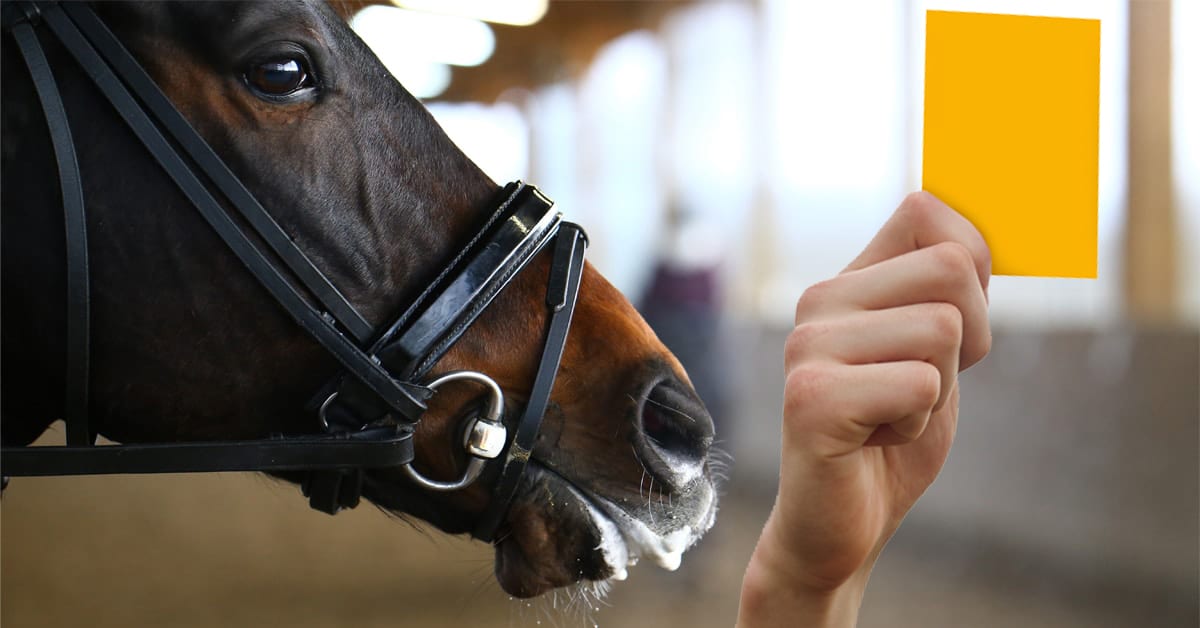The FEI will tighten up its rider warning systems next year, having admitted the current approach lack “impact.”
It will also start formulating a different system for regulating tack, which struggles to keep up with the constant arrival of new bits and other gadgets on the market. FEI will also require all member countries to align national rules with FEI horse abuse regulations.
Furthermore, FEI appears to have acknowledged the existence of blue tongues – or at least discoloured tongues – allegedly caused by restricted oxygen supply and generally associated with the double bridle.
However, the recently published draft FEI rules for 2026 still contain considerable inconsistencies, leaving the observer to infer that horses are expected to tolerate more discomfort or rough riding in some disciplines compared with others.
FEI has also rejected proposals from Poland to expressly define hyperflexion [rollkur] as horse abuse, and from Sweden to align the handling of horse abuse uniformly across all sports. Sweden cited 19 differently-worded FEI rules that all try to deal with abuse. But the FEI says its working groups and other research initiatives – created in response to the challenge of social licence to operate – must first be allowed to complete their investigations.
Currently, during competitions, ground juries may give warnings, or a yellow card, with repeat offenders facing immediate suspension. More serious cases can be referred to the FEI legal department and Tribunal. The Tribunal also deals with out-of-competition allegations of horse abuse, such as those against Charlotte Dujardin (whose one-year suspension recently ended.)
In future on the field of play, oral or written warnings may be given for rule violations of minor consequence or deemed unintentional. But there will be an escalation of sanctions for repeat offenders, culminating in a 4,000 Swiss franc fine for four warnings in a 12 calendar month period. The yellow card system – generally for more serious offences such as horse abuse in competition – remains, with an automatic two-month suspension for two or more yellow cards within 12 months.
In a confusing development for 2026, another tier, the Recorded Warning, will be expanded to jumping and driving (though not dressage, para-dressage, endurance or vaulting). Until now it was an exclusive initiative of eventing. No explanation has been offered for the notable differences in proposed consequences, although the calendar of eventing and driving – both of which have a “closed” season – may be a factor.
From January, in eventing three Recorded Warnings within 24 months will result in a two-month suspension but no fine; in jumping, two or more within 12 months means a 1,000 Swiss franc fine and one-month suspension; and in driving, three in 12 months means a two-month suspension, but no fine.
The willingness of officials to warn riders or refer cases to FEI HQ varies considerably from sport to sport (follow links here) and will yet determine the practical effect of next year’s stronger rules.
Eventing has always issued more warnings than any other FEI sport, also detailing the alleged offences on its published listings. Eventing has issued 110 warnings and yellow cards already this year. This may imply that it is the most abusive or anarchic sport until it is noticed that eventing utilises warnings as an adjunct to its scoring system, i.e. for jumping the wrong cross-country fence or crossing the boundary ropes. Only 26 of the 110 eventing warnings so far in 2025 relate to horse abuse, mostly for excessive use of whip and/or spurs.
Conversely, despite being the discipline most under public scrutiny, dressage hands down by far the fewest warnings. Only two yellow cards have been issued anywhere in the world so far this year, with barely 10 throughout 2024, all for undisclosed violations; dressage also does not publish names of riders receiving verbal or written warnings.
Last year, during the Paris Olympic Games, FEI head vet Dr. Goran Akerstrom briefed media that several dressage riders had been warned over alleged blue tongues; yet these riders have never appeared on any warnings list.
In an immediate move across all sports, the FEI has banned use of marshmallow fluff or other sugary or treat-based products to fake foaming of the mouth, thereby concealing welfare concerns. This is now punishable by yellow card plus elimination. Marshmallow fluff, etc., has been banned in FEI dressage since 2022, but this rule seems never to have been applied.
The rare use of special FEI Board Resolution to apply the new marshmallow fluff rule from July 1 (instead of waiting till 2026) suggests the FEI now deems it urgent. In response to media enquiries, FEI said it had received “numerous images” of mouths covered in thick, sticky foam.
“The FEI concluded that this unnatural foaming was very likely induced by excessive feeding with treats composed of icing sugar and a binder (gelatine, bee wax, gum arabica, etc.” The FEI also made a rare reference to discoloration of soft tissue: “There are strong indications that it is used to mask issues in the oral cavity such as discoloration of a horse’s tongue and gums.”
More News









